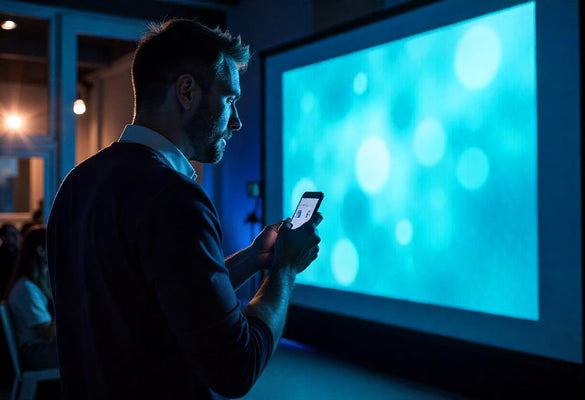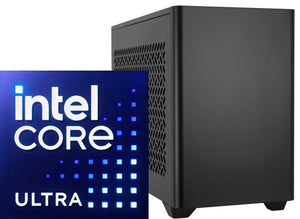AR and VR in Corporate Events: Complete Production Guide for Immersive

Corporate events are transforming from traditional presentations into immersive experiences that captivate audiences and create lasting impressions. The integration of AR at live events and virtual reality technology has revolutionized how companies connect with their stakeholders, delivering memorable experiences that traditional event formats simply cannot match.
The modern corporate landscape demands innovative approaches to engage audiences who expect interactive, personalized experiences. Mixed reality event production offers companies the opportunity to create compelling narratives that blend physical and digital elements, transforming ordinary corporate gatherings into extraordinary brand experiences.
Why AR and VR Are Reshaping Corporate Events
Corporate events face increasing challenges in capturing and maintaining audience attention. Traditional presentations, networking sessions, and product demonstrations often fail to create the impact needed to achieve business objectives. Event based AR production addresses these challenges by creating interactive environments where participants become active contributors rather than passive observers.
The technology enables companies to present complex information in intuitive, visual formats that improve comprehension and retention. Product launches become immersive experiences where attendees can interact with virtual prototypes, while training sessions transform into hands-on simulations that improve learning outcomes.
Top Companies Leading AR and VR Corporate Event Production
1. ARWALL
ARWALL stands at the forefront of AR content at corporate events, offering comprehensive solutions for immersive event production. Their innovative approach combines cutting-edge technology with creative storytelling to deliver exceptional corporate experiences. The company specializes in creating custom AR and VR applications that align with specific business objectives, ensuring each event achieves maximum impact.
2. Magic Leap
Magic Leap provides spatial computing solutions that create realistic mixed reality experiences for corporate events. Their technology enables companies to overlay digital information onto physical spaces, creating interactive presentations and product demonstrations that engage audiences in unprecedented ways.
3. Unity Technologies
Unity Technologies offers robust development platforms for creating custom AR and VR experiences tailored to corporate event needs. Their solutions enable companies to build interactive applications that showcase products, services, and brand messages through immersive storytelling.
4. Varjo
Varjo specializes in high-resolution VR and mixed reality headsets designed for professional applications. Their technology delivers exceptional visual quality that makes virtual environments indistinguishable from reality, perfect for high-stakes corporate presentations and product launches.
5. Pico Interactive
Pico Interactive focuses on enterprise VR solutions that streamline event management and participant engagement. Their all-in-one VR systems eliminate technical complexities, allowing event organizers to focus on content creation and audience experience.

Planning Your AR/VR Corporate Event Production
Define Clear Objectives and Success Metrics
Successful AR and VR corporate events begin with clearly defined objectives that align with broader business goals. Whether the purpose is product education, brand awareness, lead generation, or employee training, each goal requires specific technological approaches and content strategies.
Establish measurable success metrics before event planning begins. These might include engagement duration, interaction rates, lead quality, knowledge retention scores, or brand sentiment improvements. Clear metrics guide technology selection and content development decisions throughout the production process.
Choose the Right Technology Platform
The choice between AR, VR, or mixed reality depends on event objectives, audience size, venue constraints, and budget considerations. AR solutions work effectively for large audiences and existing venue spaces, while VR provides controlled environments ideal for detailed product demonstrations or training simulations.
Consider hardware requirements, technical support needs, and participant comfort levels when selecting technology platforms. The solution should enhance rather than complicate the event experience, requiring minimal technical expertise from participants.
Content Development and Storytelling Strategy
Compelling content forms the foundation of successful AR and VR corporate events. The technology should serve the story, not overshadow it. Focus on creating narratives that guide participants through meaningful experiences that reinforce key messages and drive desired actions.
Interactive elements must feel natural and intuitive, avoiding complex controls or confusing interfaces that detract from the core message. The content should be accessible to diverse audiences with varying technical comfort levels.
Technical Infrastructure and Support
Reliable technical infrastructure is crucial for AR and VR event success. This includes high-speed internet connectivity, sufficient bandwidth for multiple simultaneous users, backup systems for critical components, and on-site technical support throughout the event.
Plan for device management, including cleaning protocols, charging stations, and quick troubleshooting procedures. Technical issues can quickly derail immersive experiences, making robust preparation essential.

Implementation Best Practices for Immersive Corporate Events
Pre-Event Preparation and Testing
Thorough testing prevents technical failures that can undermine event success. Conduct multiple rehearsals with actual hardware and software configurations, testing all interactive elements under conditions that simulate the actual event environment.
Train event staff on basic troubleshooting procedures and participant assistance protocols. Staff should be comfortable explaining the technology and guiding participants through the experience without technical jargon.
Participant Onboarding and Support
Design streamlined onboarding processes that quickly familiarize participants with the technology without overwhelming them. Clear instructions, visual guides, and hands-on demonstration help participants feel comfortable and confident.
Provide multiple support options during the event, including dedicated technical staff, clear signage, and backup traditional presentation methods if needed. The goal is to ensure every participant can fully engage with the experience.
Content Flow and Pacing
Structure AR and VR experiences with appropriate pacing that maintains engagement without causing fatigue. Virtual reality sessions should typically last 10-15 minutes to prevent motion sickness, while AR experiences can extend longer due to their integration with the physical environment.
Build in natural transition points and breaks that allow participants to process information and engage in discussions about their experiences. The technology should facilitate rather than replace human interaction.
Data Collection and Analytics
Implement systems to capture meaningful data about participant engagement, interaction patterns, and experience outcomes. This information provides valuable insights for measuring event success and improving future implementations.
Privacy considerations are paramount when collecting participant data. Clearly communicate what information is being gathered and how it will be used, ensuring compliance with relevant privacy regulations.
Measuring Success and ROI of AR/VR Corporate Events
Engagement Metrics and Behavioral Analysis
Track participant engagement through interaction duration, completion rates, and behavioral patterns within the AR/VR environment. These metrics provide insights into content effectiveness and participant interest levels.
Analyze which elements generate the most engagement and which areas participants tend to skip or abandon. This information guides content optimization for future events and helps identify the most impactful aspects of the experience.
Lead Generation and Conversion Tracking
For business development events, track lead quality and conversion rates from AR/VR experiences compared to traditional event formats. Monitor how immersive experiences influence participant behavior and purchasing decisions.
Implement systems to capture participant contact information and preferences expressed through their interactions with virtual content. This data provides valuable insights for follow-up marketing efforts.
Long-term Impact Assessment
Evaluate the lasting impact of AR/VR experiences on brand perception, message retention, and participant behavior over time. Conduct follow-up surveys and interviews to assess how the experience influenced participant attitudes and actions.
Compare long-term outcomes from immersive events with traditional corporate event formats to quantify the additional value provided by AR and VR technology investments.
Future Trends in AR/VR Corporate Event Production
Hybrid Event Integration
The future of corporate events lies in seamless integration between physical and virtual experiences. Hybrid events will combine in-person attendance with remote participation through AR and VR technology, expanding reach while maintaining engagement quality.
This integration requires sophisticated technical infrastructure and content strategies that work effectively across multiple platforms and participant types. The challenge lies in creating cohesive experiences that feel natural for both physical and virtual attendees.
Artificial Intelligence and Personalization
AI integration will enable personalized AR and VR experiences that adapt to individual participant preferences, knowledge levels, and engagement patterns. This personalization will improve content relevance and increase overall event effectiveness.
Machine learning algorithms will analyze participant behavior in real-time, adjusting content presentation and interaction options to optimize engagement for each individual. This level of personalization will transform corporate events from one-size-fits-all presentations into tailored experiences.
Advanced Haptic Feedback and Sensory Integration
Future AR and VR corporate events will incorporate advanced haptic feedback systems that provide tactile sensations, making virtual experiences feel increasingly realistic. This technology will be particularly valuable for product demonstrations and training applications.
Integration of additional sensory elements, including scent and temperature control, will create more immersive and memorable experiences. These multi-sensory approaches will significantly enhance participant engagement and information retention.

Conclusion
AR and VR technology represents a fundamental shift in how corporate events engage audiences and achieve business objectives. The transition from traditional presentation formats to immersive experiences requires careful planning, appropriate technology selection, and focus on content quality over technological novelty.
Success in AR and VR corporate event production depends on clear objective definition, thorough preparation, and participant-centered design. Companies that invest in these technologies while maintaining focus on human connection and meaningful content will create memorable experiences that drive measurable business results.
The future of corporate events lies in seamless integration of physical and virtual elements, personalized experiences, and technology that enhances rather than replaces human interaction. Organizations that embrace these principles will build stronger relationships with their stakeholders and achieve superior event outcomes.
Frequently Asked Questions
What are the main benefits of using AR and VR in corporate events?
AR and VR technology offers several key benefits for corporate events, including increased participant engagement, improved information retention, and the ability to create memorable experiences that differentiate your brand. These technologies allow companies to present complex information in intuitive visual formats, create interactive product demonstrations, and provide hands-on training experiences that would be impossible with traditional event formats.
How much does it cost to implement AR/VR technology in corporate events?
The cost of AR/VR implementation varies significantly based on event size, technology complexity, and content requirements. Basic AR experiences can start from $10,000-$25,000, while comprehensive VR installations for large corporate events can range from $50,000-$200,000 or more. Factors influencing cost include hardware requirements, custom content development, technical support needs, and venue infrastructure requirements.
What technical requirements are necessary for AR/VR corporate events?
Technical requirements include high-speed internet connectivity with sufficient bandwidth for multiple simultaneous users, appropriate hardware (headsets, tablets, or smartphones), adequate venue space for safe movement, proper lighting conditions for AR applications, and on-site technical support. Additionally, backup systems for critical components and device management protocols are essential for smooth event execution.
How long should AR/VR experiences last during corporate events?
VR experiences should typically last 10-15 minutes to prevent motion sickness and maintain participant comfort, while AR experiences can extend longer since they integrate with the physical environment. The key is to structure experiences with appropriate pacing that maintains engagement without causing fatigue, building in natural transition points and breaks for discussion and processing.
What are the best practices for participant onboarding with AR/VR technology?
Effective onboarding includes streamlined processes that quickly familiarize participants with the technology, clear visual instructions and guides, hands-on demonstrations, and multiple support options including dedicated technical staff. The goal is to ensure every participant feels comfortable and confident without overwhelming them with technical details, focusing on the experience rather than the technology itself.




